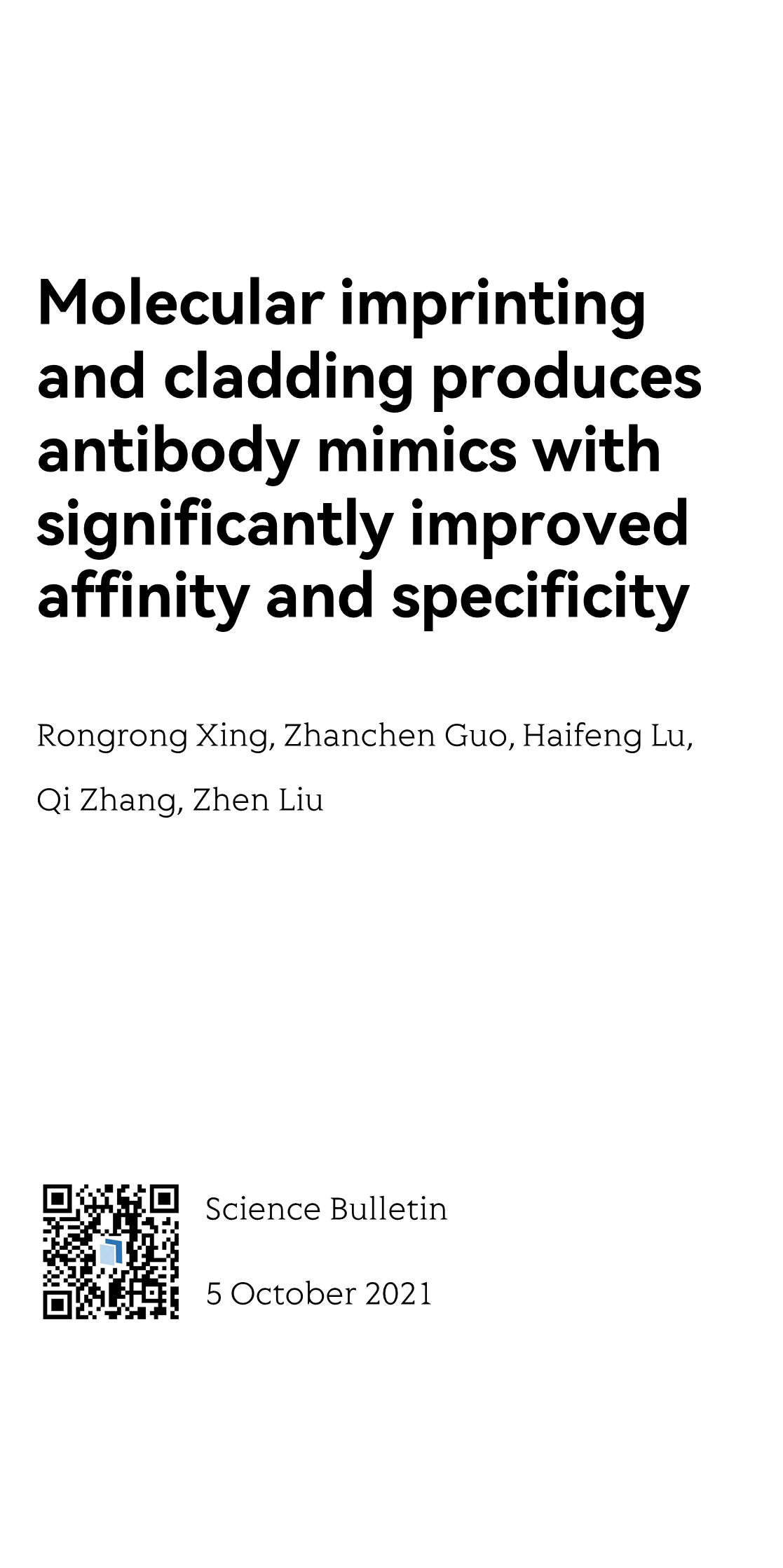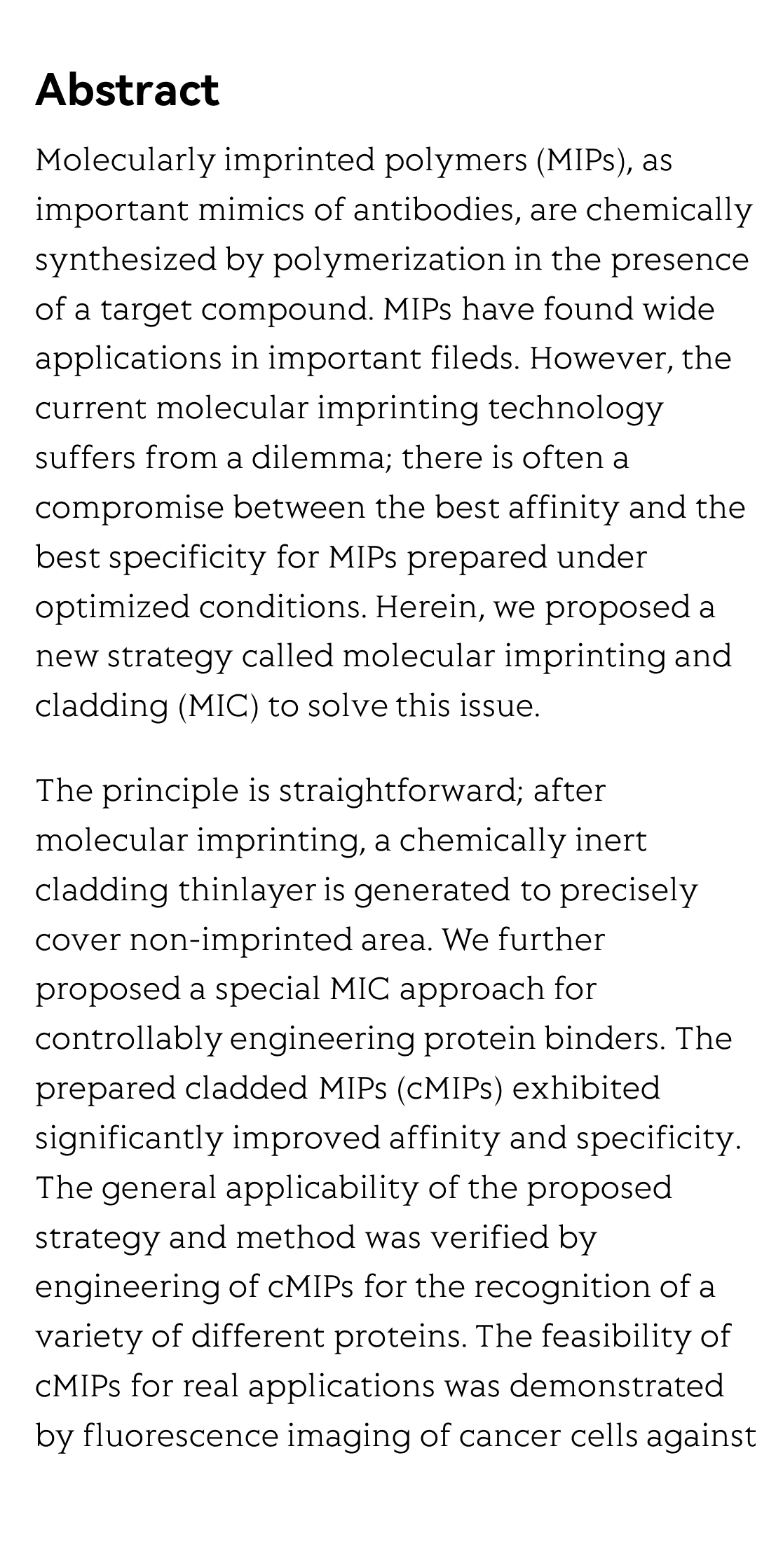(Peer-Reviewed) Molecular imprinting and cladding produces antibody mimics with significantly improved affinity and specificity
Rongrong Xing 邢荣荣, Zhanchen Guo 郭展辰, Haifeng Lu 卢海峰, Qi Zhang 张齐, Zhen Liu 刘震
State Key Laboratory of Analytical Chemistry for Life Science, School of Chemistry and Chemical Engineering, Nanjing University, Nanjing 210023, China
中国 南京 南京大学化学化工学院 生命分析化学国家重点实验室
Science Bulletin, 2021-10-05
Abstract
Molecularly imprinted polymers (MIPs), as important mimics of antibodies, are chemically synthesized by polymerization in the presence of a target compound. MIPs have found wide applications in important fileds. However, the current molecular imprinting technology suffers from a dilemma; there is often a compromise between the best affinity and the best specificity for MIPs prepared under optimized conditions. Herein, we proposed a new strategy called molecular imprinting and cladding (MIC) to solve this issue.
The principle is straightforward; after molecular imprinting, a chemically inert cladding thinlayer is generated to precisely cover non-imprinted area. We further proposed a special MIC approach for controllably engineering protein binders. The prepared cladded MIPs (cMIPs) exhibited significantly improved affinity and specificity. The general applicability of the proposed strategy and method was verified by engineering of cMIPs for the recognition of a variety of different proteins. The feasibility of cMIPs for real applications was demonstrated by fluorescence imaging of cancer cells against normal cells and immunoassay of C-peptide in human urine.
This study opened up a new avenue for controllably engineering protein-specific antibody mimics with excellent recognition properties, holding great prospective in important applications such as disease diagnosis and nanomedicine.
Flicker minimization in power-saving displays enabled by measurement of difference in flexoelectric coefficients and displacement-current in positive dielectric anisotropy liquid crystals
Junho Jung, HaYoung Jung, GyuRi Choi, HanByeol Park, Sun-Mi Park, Ki-Sun Kwon, Heui-Seok Jin, Dong-Jin Lee, Hoon Jeong, JeongKi Park, Byeong Koo Kim, Seung Hee Lee, MinSu Kim
Opto-Electronic Advances
2025-09-25
Dual-frequency angular-multiplexed fringe projection profilometry with deep learning: breaking hardware limits for ultra-high-speed 3D imaging
Wenwu Chen, Yifan Liu, Shijie Feng, Wei Yin, Jiaming Qian, Yixuan Li, Hang Zhang, Maciej Trusiak, Malgorzata Kujawinska, Qian Chen, Chao Zuo
Opto-Electronic Advances
2025-09-25





